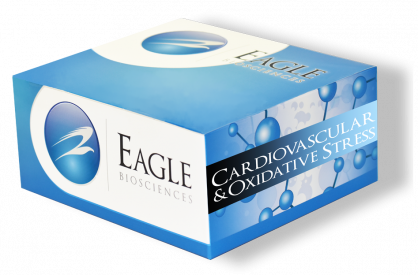Rat MIP-2 ELISA Assay
The Rat MIP-2 ELISA Assay is For Research Use Only
Size: 1×96 wells
Sensitivity: 15 pg/mL
Dynamic Range: 62.5 – 2000 pg/ml
Incubation Time: 3.5 hours
Sample Type: Serum, Plasma, Cell Culture
Sample Size: 100 µl
Alternative Names: Macrophage Inflammatory Protein
SAMPLE COLLECTION AND STORAGE
1. Cell Culture Supernates – Remove particulates by centrifugation.
2. Serum – Use a serum separator tube (SST) and allow samples to clot for 30 minutes before centrifugation for 15 minutes at approximately 1000 x g. Remove serum, avoid hemolysis and high blood lipid samples.
3. Plasma – Recommended EDTA as an anticoagulant in plasma. Centrifuge for 15 minutes at 1000 x g within 30 minutes of collection.
4. Assay immediately or aliquot and store samples at -20°C. Avoid repeated freeze-thaw cycles.
5. Dilute samples at the appropriate multiple (recommended to do pre-test to determine the dilution factor).
Note: Normal rat serum or plasma samples are suggested to make a 1:2 dilution.
Assay Background
Macrophage inflammatory protein 2 (MIP-2) was originally identified as a heparin binding protein secreted from a murine macrophage cell line in response to endotoxin stimulation. The protein is produced by a variety of cell types, including intestinal epithelium, macrophages, astrocytes and fibroblasts. Homologs of the mouse MIP-2 have been identified in human, rat and cotton rat. MIP-2 is an ELR-containing member of the alpha (CXC) subfamily of chemokines. The cotton rat MIP-2 gene encodes a 101 amino acid (aa) residue precursor protein with a 28 aa putative signal peptide that is cleaved to generate the 73 aa mature protein. Mature cotton rat MIP-2 has two intrachain disulfide bonds and no potential glycosylation sites. It shares approximately 79% and 85% aa sequence identity with rat CINC-3 and mouse MIP-2, respectively. MIP-2 is a potent neutrophil attractant and activator. MIP-2 binds and activates the chemokine receptor CXCR-2. The recombinant cotton rat MIP-2 has been shown to bind and activate the human CXCR-2.


